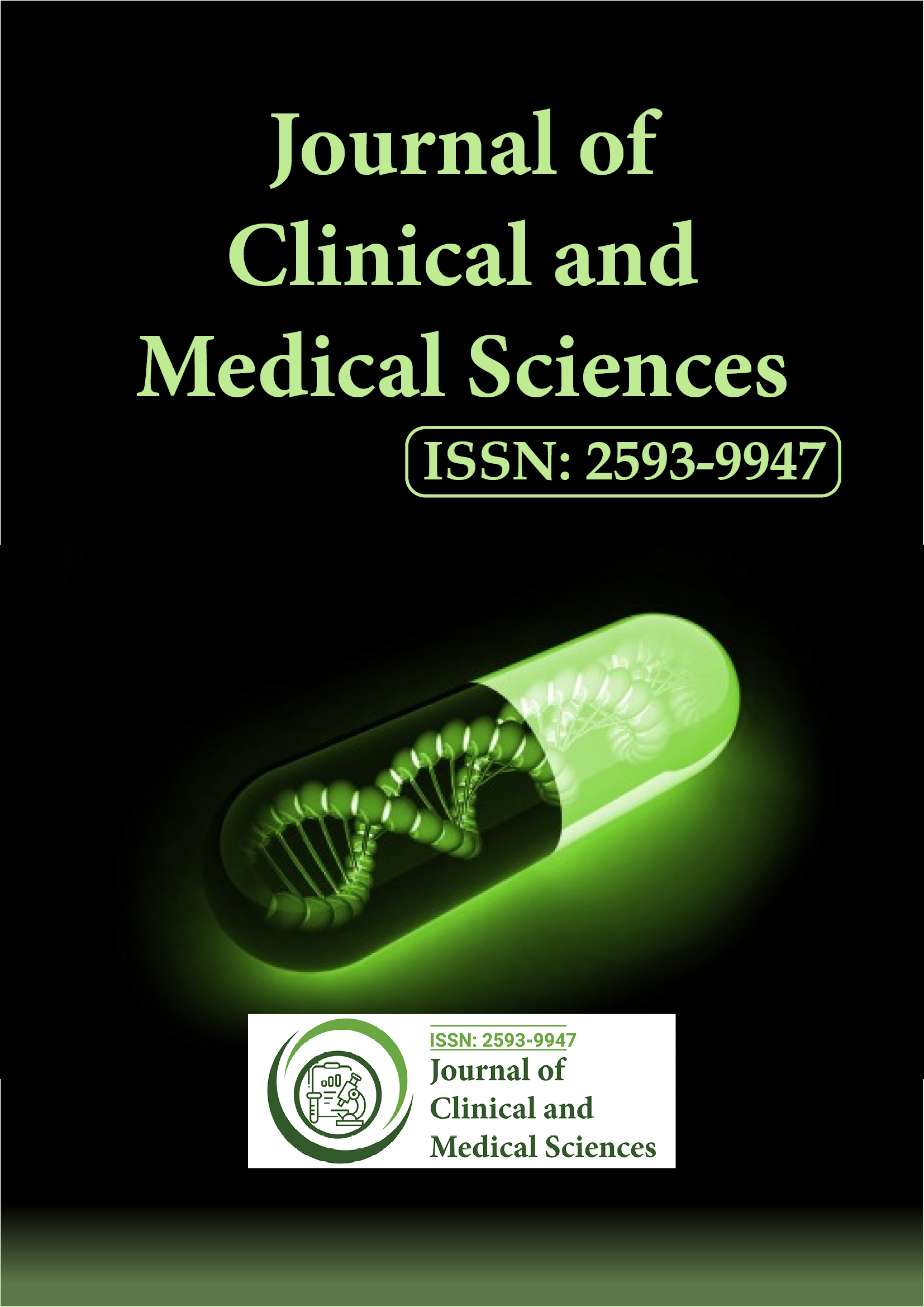Indexed In
- Euro Pub
- Google Scholar
Useful Links
Share This Page
Journal Flyer

Open Access Journals
- Agri and Aquaculture
- Biochemistry
- Bioinformatics & Systems Biology
- Business & Management
- Chemistry
- Clinical Sciences
- Engineering
- Food & Nutrition
- General Science
- Genetics & Molecular Biology
- Immunology & Microbiology
- Medical Sciences
- Neuroscience & Psychology
- Nursing & Health Care
- Pharmaceutical Sciences
Commentary - (2021) Volume 5, Issue 6
An Overview of the Biomedical Significance of Alpha1-Antitrypsin
Faupel Marco*Published: 23-Nov-2021
Abstract
Proteases (also known as Proteinases or Peptidases) are hydrolases that break down proteins into smaller peptides and amino acids. They are a type of enzyme that plays a crucial role in both biological and commercial applications. Serine proteases, aspartic proteases, cysteine proteases, threonine proteases, glutamate proteases, and metalloproteases are the six types of proteases. Humans have between 500 and 600 distinct proteases, the majority of which are serine, cysteine, and metalloproteases. The control of protease activity in tissues is required for homeostasis to be maintained. When present in large concentrations, they have the potential to be harmful. To avoid breakdown of connective tissue proteins such as elastin, collagen, and proteoglycans, they are strictly regulated in the extracellular and per cellular area. Regulated expression/secretion, activation of inactive precursors or zymogens of proteases and destruction of mature enzymes are typically used to provide the most basic degree of control. Endogenous protein inhibitors inhibit their protolithic action, which is a second level of regulation. Fermi and Pernossi discovered the proteinase inhibitory action of human plasma in 1894. Shultz discovered the principal inhibitor of proteolytic activity in 1955 and termed it alpha1-antitrypsin (1- AT) for its capacity to inhibit trypsin.
Editorial Note
Proteases (also known as Proteinases or Peptidases) are hydrolases that break down proteins into smaller peptides and amino acids. They are a type of enzyme that plays a crucial role in both biological and commercial applications. Serine proteases, aspartic proteases, cysteine proteases, threonine proteases, glutamate proteases, and metalloproteases are the six types of proteases. Humans have between 500 and 600 distinct proteases, the majority of which are serine, cysteine, and metalloproteases. The control of protease activity in tissues is required for homeostasis to be maintained. When present in large concentrations, they have the potential to be harmful. To avoid breakdown of connective tissue proteins such as elastin, collagen, and proteoglycans, they are strictly regulated in the extracellular and per cellular area. Regulated expression/secretion, activation of inactive precursors or zymogens of proteases and destruction of mature enzymes are typically used to provide the most basic degree of control. Endogenous protein inhibitors inhibit their protolithic action, which is a second level of regulation. Fermi and Pernossi discovered the proteinase inhibitory action of human plasma in 1894. Shultz discovered the principal inhibitor of proteolytic activity in 1955 and termed it alpha1-antitrypsin (1- AT) for its capacity to inhibit trypsin.
1-AT is currently known to be a powerful inhibitor of trypsin as well as other serine proteases, with a preference for neutrophil serine proteases, Neutrophil Elastase (NE), and proteinase-3, and is one of the most abundant serine protease inhibitors (serpins) in circulation. 1-AT is a polymorphic acute-phase glycoprotein that is mostly generated in hepatocytes (70%-80%) and released into the bloodstream. Extra hepatic tissues and cells, such as neutrophils, monocytes, and macrophages, alveolar macrophages, intestinal epithelial cells, carcinoma cells, and the cornea, produce it in addition to the liver. 1-AT has a half-life of 3-5 days and a typical plasma concentration of 0.9 to 1.75 mg/ml. 1-AT has antimicrobial properties against Escherichia coli proteins. Cryptosporidum parvum is a parasitic protozoan. Pseudomonas aeruginosa has also been identified. A 20-residue fragment of 1-AT has recently been shown to bind to the gp41 fusion peptide of HIV-1, preventing the virus from entering target cells and so inhibiting HIV-1 infection.
Biological Functions
Alpha1-Antitrypsin has a variety of functions in all living cells. One of its principal physiological functions is to suppress the proteolytic activity of elastase released by active neutrophils, allowing elastic tissues to maintain structural integrity. A healthy balance of elastase and 1-AT is required for tissue integrity, and an excess of elastase has been linked to the pathophysiology of a number of acute and chronic inflammatory disorders. In vivo, leucocytes, neutrophils, and macrophages, which release substantial amounts of oxidants at areas of inflammation, have been found to cause oxidative inactivation of 1- AT, resulting in disrupted proteaseâ??anti protease equilibrium. Until recently, it was considered that 1-AT's principal role was to block NE.
Current research has shown that 1-AT has anti-inflammatory, anti-apoptotic, immunomodulatory, and antibacterial properties. 1-AT is an irreversible kallikriens 7 and 14 inhibitor. Blocking pro-inflammatory cytokine release from human peripheral blood mononuclear cells aids 1-AT's anti-inflammatory activity. TNF- and IL-1 are two common upstream mediators of inflammation, and 1-AT inhibits their synthesis. In several experimental circumstances, 1-AT has been demonstrated to boost the levels of IL-10, an anti-inflammatory cytokine. In the presence of high 1-AT, the activity of pro-inflammatory cytokines appeared to consistently decrease, while the production of anti-inflammatory mediators increased. IL-8 and Monocyte Chemotactic Protein (MCP)-1, two key chemokines involved in inflammatory cell chemotaxis, are likewise reduced by 1-AT. 1-AT has also been shown to stop neutrophils from producing superoxide.
In Recent research has shown that 1-AT reduces the activity of caspase-3, an intracellular cysteine protease that plays a key role in cell apoptosis. 1-AT has been shown in studies to stimulate insulin production and protect -cells from cytokine-induced apoptosis. 1-AT therapy prolongs islet graft survival in transplanted allogeneic diabetic mice, according to animal experimental investigations. Overexpression of 1-AT decreases insulates and inhibits the development of overt hyperglycemia in non-obese mice, according to in vitro studies.
